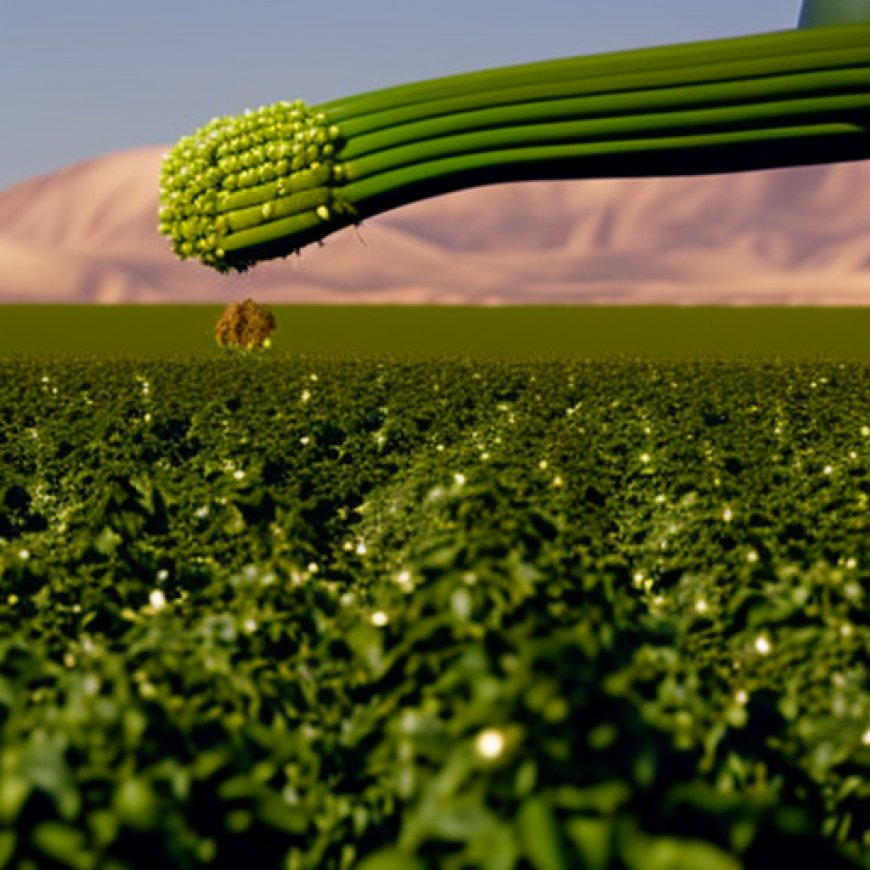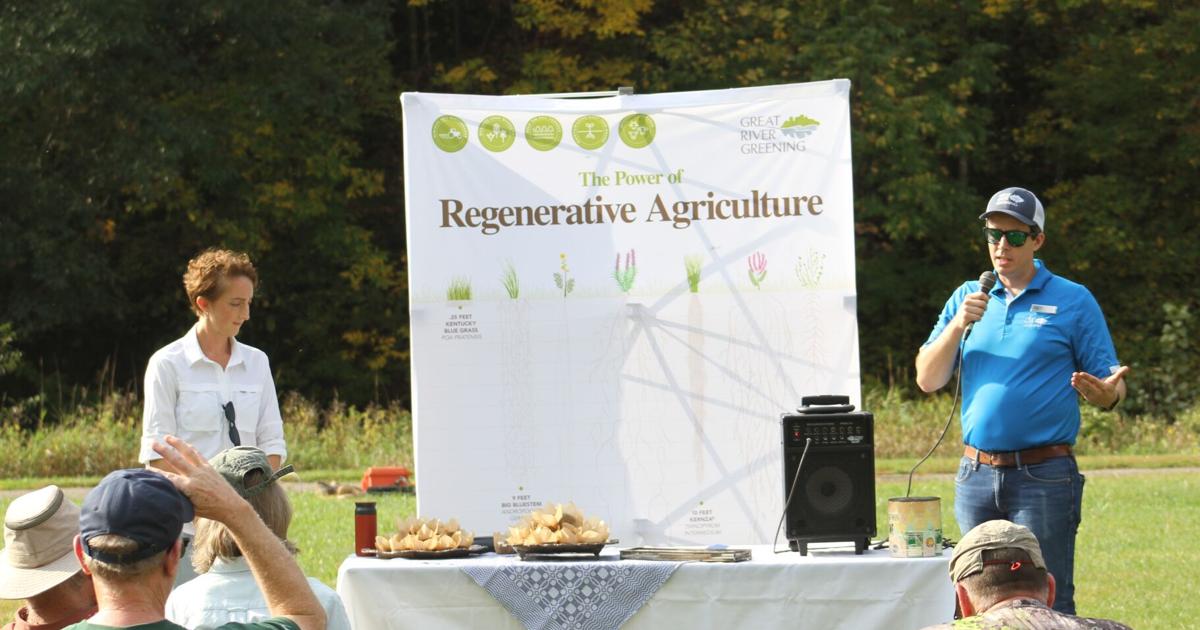Regenerative agriculture: Kernza crop finding niche in fields, products
Regenerative agriculture: Kernza crop finding niche in fields, products Mankato Free Press


Twin Cities Chef Explores the Potential of Kernza as a Sustainable Farm Crop

Introduction
Twin Cities chef Karyn Tomlinson recently attended an event at Seven Mile Creek County Park to discuss the potential of Kernza as a sustainable farm crop. Kernza, a trademarked perennial grain, is known for its environmental benefits, including improved soil and water quality and carbon storage. The event aimed to bring together farmers, environmentalists, and other stakeholders to explore the possibilities of this alternative crop.
Building Relationships for Change
Karyn Tomlinson, the featured speaker at the event, emphasized the importance of building relationships to drive change. She shared her own experience of connecting with farmers in the region and organizing community dinners to showcase innovative farming practices. Tomlinson believes that by fostering relationships and collaboration, farmers can feel more comfortable exploring new crops and embracing sustainable agriculture.
Challenges and Opportunities
The transition to alternative crops can be slow in the traditional corn-soybean dominated agricultural landscape. However, organic farmer Ben Penner and others like him are advocating for the development and expansion of Kernza markets. Penner believes that with the support of companies like Cargill, which has shown a keen interest in cover crops and sustainability, Kernza and other cover crops will continue to grow in popularity over the next five years.
Promoting Kernza
The Kernza promotional event at Seven Mile Creek County Park attracted a diverse range of participants, including vendors and representatives from various organizations. Joe Caplan, the director of research and development for Perennial Pantry, highlighted the increasing popularity of Kernza in their products. However, he acknowledged that there is still work to be done to further promote and develop the crop.
Market Development and Environmental Benefits
Brad Gordon, Great River Greening’s southern Minnesota program manager, emphasized the need to build a market for Kernza. He recognized that while it is the first perennial crop in the world, it is still in the early stages of development. To ensure its success, the number of acres dedicated to Kernza cultivation must align with market demand. Scott Mackenthun from the Minnesota Department of Natural Resources also highlighted the importance of cover crops like Kernza in habitat restoration and improvement.
Conclusion
The event at Seven Mile Creek County Park showcased the potential of Kernza as a sustainable farm crop. By bringing together stakeholders from different backgrounds, it fostered collaboration and highlighted the importance of building relationships for driving change. With continued support from organizations like Cargill and increasing market demand, Kernza and other cover crops have a promising future in sustainable agriculture.
SDGs, Targets, and Indicators
1. Which SDGs are addressed or connected to the issues highlighted in the article?
- SDG 2: Zero Hunger – The article discusses the potential of Kernza as a new alternative farm crop, which can contribute to food security and sustainable agriculture.
- SDG 6: Clean Water and Sanitation – The article mentions the environmental benefits of Kernza, such as its deep root system that can improve soil and water quality.
- SDG 13: Climate Action – The article highlights the carbon storage potential of Kernza, which can help mitigate climate change.
- SDG 15: Life on Land – The article mentions how planting Kernza on farm fields can help slow the flow of water and prevent flooding, benefiting the local ecosystem.
2. What specific targets under those SDGs can be identified based on the article’s content?
- SDG 2.3: By 2030, double the agricultural productivity and incomes of small-scale food producers, particularly women, indigenous peoples, family farmers, and fishers.
- SDG 6.4: By 2030, substantially increase water-use efficiency across all sectors and ensure sustainable withdrawals and supply of freshwater to address water scarcity.
- SDG 13.2: Integrate climate change measures into national policies, strategies, and planning.
- SDG 15.3: By 2030, combat desertification, restore degraded land, and strive to achieve a land degradation-neutral world.
3. Are there any indicators mentioned or implied in the article that can be used to measure progress towards the identified targets?
- Indicator for SDG 2.3: Agricultural productivity and income levels of small-scale food producers.
- Indicator for SDG 6.4: Water-use efficiency and sustainable water withdrawals in agricultural practices.
- Indicator for SDG 13.2: Integration of climate change measures in agricultural policies and practices.
- Indicator for SDG 15.3: Restoration of degraded land and reduction in land degradation rates.
SDGs, Targets, and Indicators
| SDGs | Targets | Indicators |
|---|---|---|
| SDG 2: Zero Hunger | 2.3: By 2030, double the agricultural productivity and incomes of small-scale food producers, particularly women, indigenous peoples, family farmers, and fishers. | Agricultural productivity and income levels of small-scale food producers. |
| SDG 6: Clean Water and Sanitation | 6.4: By 2030, substantially increase water-use efficiency across all sectors and ensure sustainable withdrawals and supply of freshwater to address water scarcity. | Water-use efficiency and sustainable water withdrawals in agricultural practices. |
| SDG 13: Climate Action | 13.2: Integrate climate change measures into national policies, strategies, and planning. | Integration of climate change measures in agricultural policies and practices. |
| SDG 15: Life on Land | 15.3: By 2030, combat desertification, restore degraded land, and strive to achieve a land degradation-neutral world. | Restoration of degraded land and reduction in land degradation rates. |
Behold! This splendid article springs forth from the wellspring of knowledge, shaped by a wondrous proprietary AI technology that delved into a vast ocean of data, illuminating the path towards the Sustainable Development Goals. Remember that all rights are reserved by SDG Investors LLC, empowering us to champion progress together.
Source: mankatofreepress.com

Join us, as fellow seekers of change, on a transformative journey at https://sdgtalks.ai/welcome, where you can become a member and actively contribute to shaping a brighter future.







